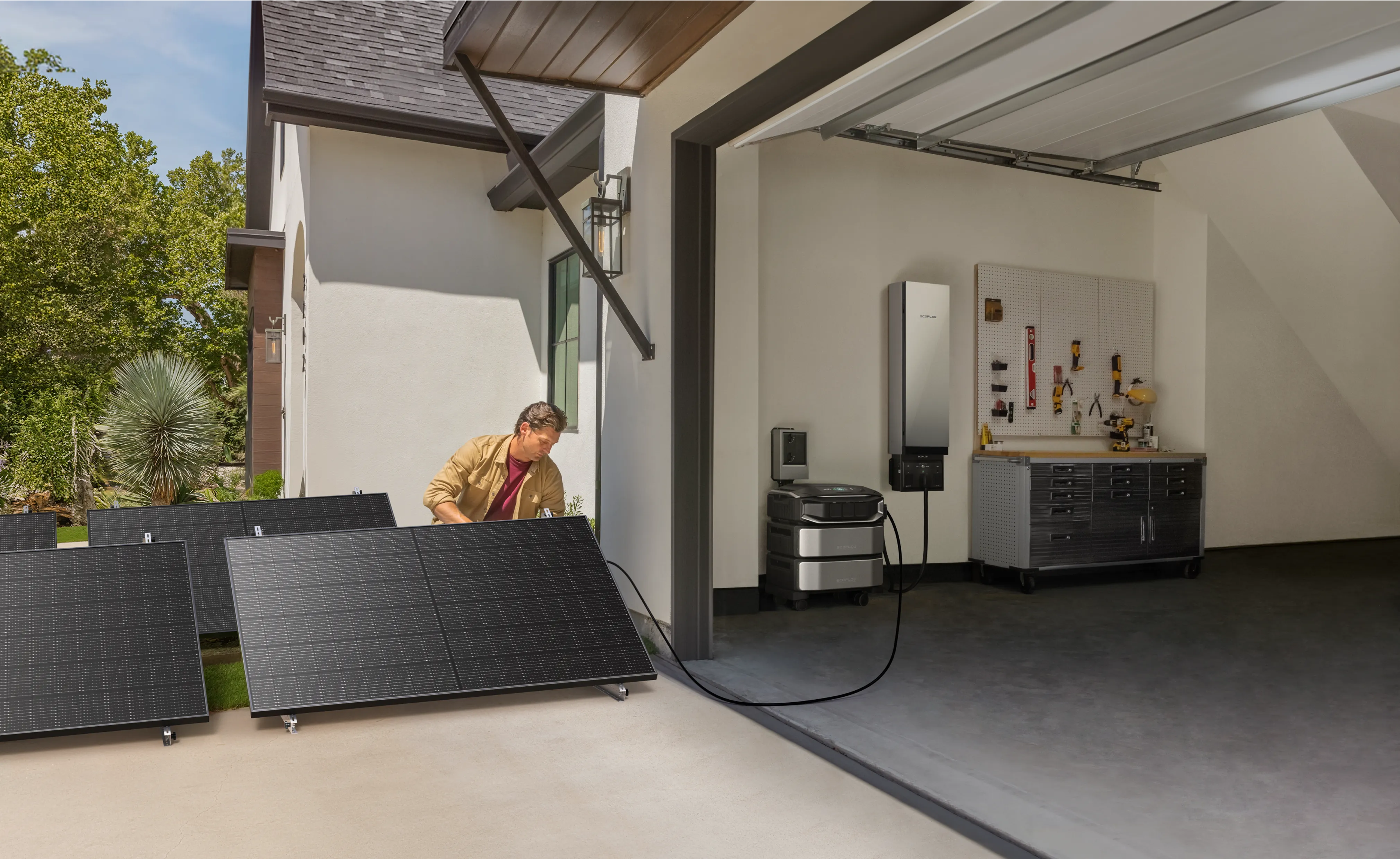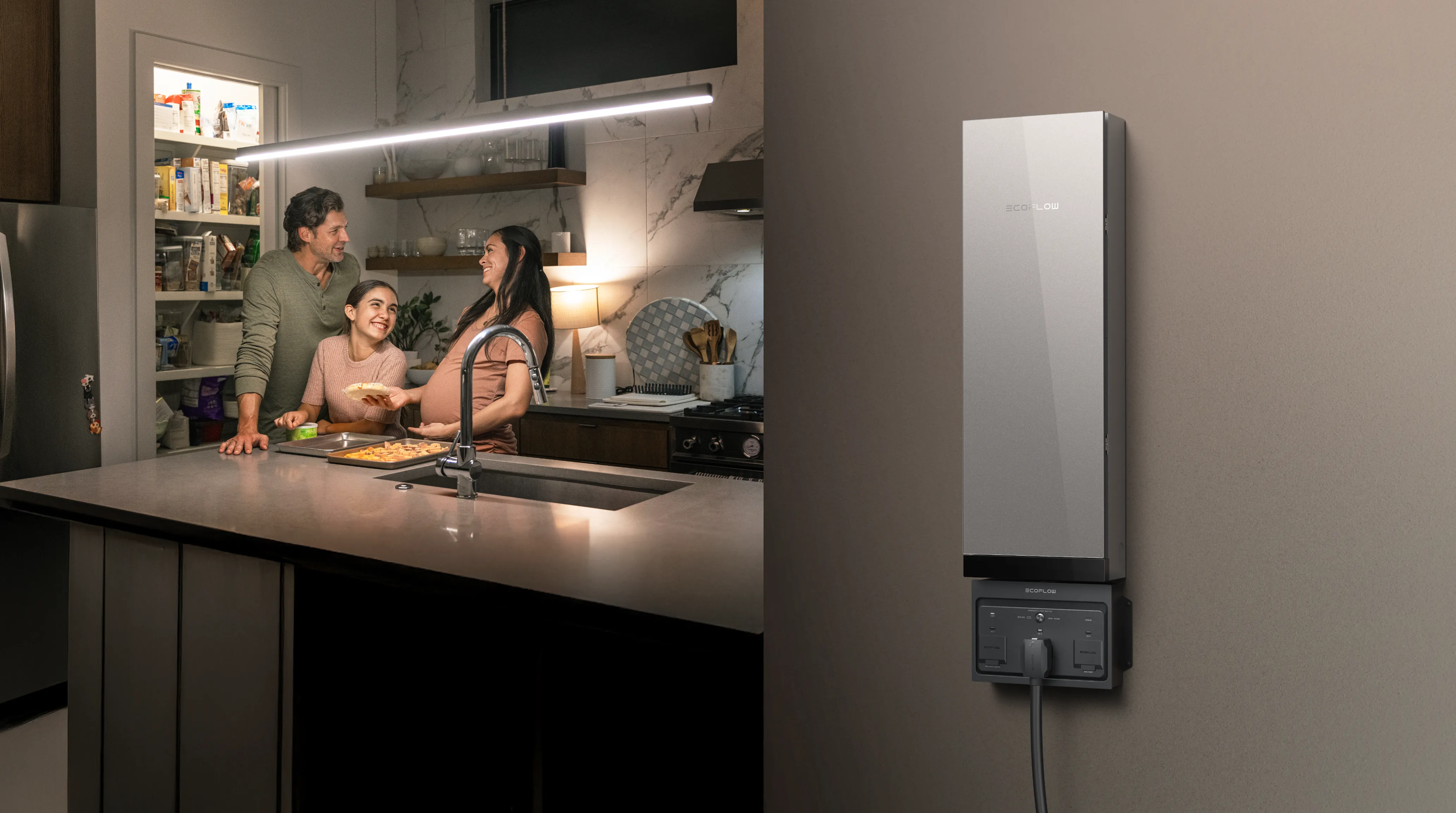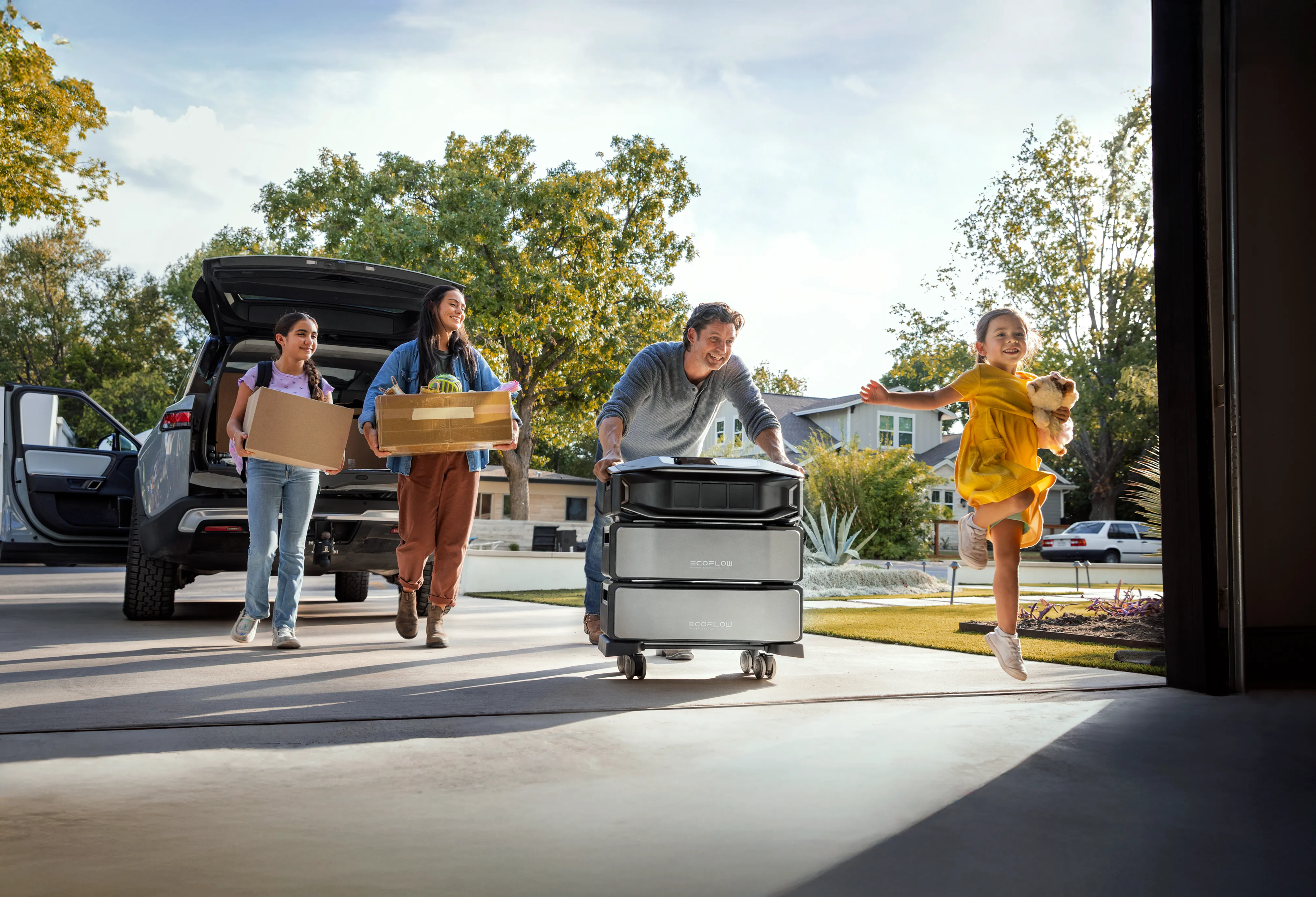How Home Power Storage Batteries Work: A Complete Guide
With energy costs on the rise and extreme weather events becoming more common across Canada, reliable backup power has never been more important. From the heavy winter storms in Vancouver to ice-driven blackouts in Quebec, Canadian homeowners are increasingly looking for solutions that provide both security and comfort when the grid goes down.
Home power storage batteries are at the centre of this shift. These systems capture electricity, whether from the grid, rooftop solar panels, or even portable generators, and store it for later use. When demand spikes, or when an outage leaves neighbourhoods in the dark, a storage battery seamlessly delivers power to keep your home running. In effect, it transforms an ordinary household into a self-sustaining energy hub.
This guide explores the science behind home batteries, explains how they operate, and shows why they are quickly becoming an essential part of modern Canadian living. From the underlying technology to the practical benefits, you’ll learn exactly how these systems help households stay connected, resilient, and more energy-efficient in a changing climate.
What Is a Home Battery System?
Before diving into how these systems operate, it helps to understand what a home battery actually is and how it fits into your household’s energy ecosystem. At its core, a home battery is more than just a backup, it’s a tool for independence, efficiency, and peace of mind.
1. Basic Definition
A home battery system is a device designed to store electricity for later use. It can be charged directly from the grid or, more commonly, paired with rooftop solar panels to capture excess generation during the day. Instead of sending surplus energy back to the grid, you can store it locally and use it when demand peaks, utility rates rise, or outages strike.
Think of it as both an energy and financial safety net: you save power when it’s abundant or inexpensive, then tap into it when supply is disrupted or costs are high. In practical terms, this means your solar array can charge the battery while the sun is shining, and in the evening or during a blackout, you draw from that stored energy to keep your home running.
2. The Main Components of a Home Battery
A modern home battery system isn’t just a single unit but a combination of carefully engineered parts working together:
Battery cells: the core storage medium, where electricity is stored chemically.
Battery Management System (BMS): monitors temperature, voltage, and current to prevent overcharging, deep discharging, or overheating.
Inverter: converts the battery’s DC energy into AC power, which is what your home appliances use.
Energy Management Interface: often an app or digital dashboard that allows you to track usage, adjust settings, and monitor cost savings in real time.
Together, these components ensure that power is stored safely and delivered efficiently, without requiring constant oversight from the homeowner.
3. How It Connects to Your Home and the Grid
Installation usually ties the battery into your main breaker panel, or through a hybrid inverter if solar panels are involved. When the grid is functioning normally, the system either charges from solar production or draws low-cost electricity directly from the grid. If an outage occurs, the battery automatically disconnects from the grid and instantly becomes your home’s power source. The transition is seamless, lights stay on, the internet continues to work, and sensitive electronics are protected.
In Canada, where winter storms, falling trees, or infrastructure stress can leave neighbourhoods in the dark for hours or even days, this automatic switch-over isn’t just a convenience. It’s a form of energy security, giving homeowners confidence that they can maintain comfort and safety regardless of external conditions.


Types of Home Power Storage Battery Chemistry
Not all home batteries are created equal. The chemistry inside a storage system determines how efficiently it operates, how long it lasts, and what kind of household it best serves. In Canadian homes today, three main battery types are most commonly found: lithium-ion, lead-acid, and sodium-ion. Each has distinct advantages depending on whether you’re looking for high efficiency solar integration, affordable backup, or a future-proof solution.
1. Lithium-Ion Batteries
Currently, the leading choice for residential energy storage, lithium-ion batteries work by shuttling lithium ions between the anode and cathode through an electrolyte during charge and discharge cycles.
This chemistry is prized for its high energy density, meaning it can pack a lot of power into a compact size. It also offers fast charging, efficient energy conversion, and long cycle life, making it the go-to option for homes with solar panels or those looking to actively manage their energy use.
In Canada, lithium-ion systems are particularly valued for their ability to handle frequent charge and discharge cycles throughout the year, whether you’re topping up during sunny days in Ontario or leaning on backup power through long winter nights in Alberta.
2. Lead-Acid Batteries
One of the oldest energy storage technologies, lead-acid batteries rely on a chemical reaction between lead plates and sulfuric acid to store and release electricity.
They remain popular for one simple reason: affordability. Lead-acid units are typically cheaper upfront and have a proven track record of reliability in backup applications. They are often chosen for seasonal cottages, off-grid cabins, or budget-conscious homeowners who want a basic safety net rather than a full solar-integrated system.
That said, they are heavier, bulkier, and less efficient than modern alternatives. They also require proper ventilation since hydrogen gas can be emitted during charging. These trade-offs make them less practical for urban or space-limited Canadian homes.
3. Sodium-Ion Batteries
The newest contender in the storage space, sodium-ion batteries function similarly to lithium-ion but replace lithium with sodium, which is an element that is abundant, low-cost, and widely available.
Sodium-ion batteries are attracting attention for their stability, lower raw material costs, and strong performance in cold climates. These characteristics make them an especially promising technology for Canadian households that experience long winters and fluctuating temperatures.
While still emerging in the commercial market, sodium-ion systems are viewed as a future-facing solution for sustainable and scalable home energy storage. They may not yet be as common as lithium-ion, but their potential to lower costs and improve cold-weather resilience makes them a technology worth watching.
What Are the Key Differences Between Them?
| Feature / Type | Lithium-Ion | Lead-Acid | Sodium-Ion |
|---|---|---|---|
| Cycle Life | 3,000–6,000+ | 500–1,000 | 2,000–4,000 |
| Depth of Discharge (DoD) | 90–100% | 50–70% | 80–90% |
| Round-Trip Efficiency | 90–95% | 70–85% | 85–90% |
| Cold Resistance | Moderate | Poor | Excellent |
| Maintenance Needs | Minimal | Regular | Minimal |
| Average Lifespan | 10–15 years | 3–5 years | 8–12 years |
| Relative Cost (per kWh) | High | Low | Moderate |
| Best Use Case | Daily solar cycling | Backup only | Cold climates/eco homes |
How Home Power Storage Batteries Work
While different battery chemistries have their own strengths, the core principle remains the same: store energy chemically and release it electrically when your home needs it. Behind the scenes, several components and processes make this possible.
1. Core Components and Their Scientific Principles
A home battery functions through electrochemical reactions. When charging, ions move between electrodes and energy is stored as chemical potential. During discharge, this process reverses, releasing stored energy back into your household’s electrical system.
This cycle is managed by the Battery Management System (BMS), which acts as the brain of the unit. The BMS regulates voltage, monitors temperature, and prevents overcharging or deep discharging, ensuring the battery performs efficiently while maintaining long-term durability.
2. The Charging Process: Capturing and Storing Energy
During charging, the inverter directs power from either the grid or your solar panel into the battery. Inside, electrons flow into the cells, where energy is stored chemically for later use. Advanced systems can be programmed to charge only at certain times, for example, when utility rates are lower overnight or when solar generation peaks during midday. This flexibility allows homeowners to avoid expensive peak-hour electricity and maximize solar output.
3. The Discharging Process: Delivering Power on Demand
When household demand rises or the grid fails, the inverter reverses direction, converting the stored DC electricity back into AC power for your home. The transition happens seamlessly, keeping essentials such as lights, refrigerators, furnaces, and internet routers running without disruption. For Canadians who face sudden storms or icy blackouts, this instant switchover can be the difference between staying comfortable and scrambling in the dark.
4. Synergy with Energy Sources: Solar and the Grid
The real power of a storage system lies in its integration with solar panels and the wider grid. With solar, your battery ensures that none of your daytime generation is wasted, you store what you don’t use, and draw from it later. In many provinces, net metering programs enable homeowners to sell excess energy back to the grid, thereby reducing both utility bills and their carbon footprints. Even without solar, batteries can charge when grid rates are lowest and discharge when prices peak, making energy use more cost-effective.


Main Uses for a Home Battery Backup
Home battery systems are more than just backup power; they provide resilience during blackouts, financial savings through smart energy management, and greater independence from the grid. For Canadian households, these advantages translate into security, comfort, and sustainability.
1. Providing Whole Home Battery Backup During Outages
Across Canada, power outages caused by winter storms, ice buildup, or grid failures are a fact of life, particularly in rural and suburban regions. A reliable home battery ensures your household remains safe and functional during these disruptions.
Take the EcoFlow DELTA Pro Ultra X as an example. It delivers 12 kW of base output, which is enough to power some high-demand appliances like air conditioners, refrigerators, sump pumps, and home office equipment. Its Adaptive Start algorithm safely manages surges up to 45 kW, protecting sensitive electronics from sudden spikes.
With auto recharging, a 20 ms automatic switchover, and support for 32 household circuits, it guarantees that lights, heating systems, and specialized appliances stay online without interruption. Safety is also central: EV-grade Full-Tab Cells, dual BMS layers, and X-Guard® technology provide robust protection for continuous, reliable operation. When paired with solar panels, the DELTA Pro Ultra X can maintain energy indefinitely during extended outages, offering true peace of mind for Canadian households facing long winters and unpredictable storms.
2. Reducing Peak-Time Electricity Costs
In provinces such as Ontario and Alberta, electricity follows time-of-use pricing, where power is more expensive during peak demand hours. A smart battery can automatically charge during low-cost off-peak periods and discharge during high-rate hours, lowering household bills and easing stress on the grid.
Over the course of a year, these savings add up, especially for families charging electric vehicles or running energy-intensive appliances. Beyond personal finances, this practice also helps flatten overall demand, contributing to a more stable and efficient Canadian energy grid.
3. Increasing Your Energy Independence
Pairing a home battery with solar panels provides Canadians with greater control over their energy. By generating and storing your own electricity, you become less dependent on the grid and less tied to fossil fuels. This independence not only improves resilience but also reduces your household’s carbon footprint.
For environmentally conscious homeowners, this aligns directly with Canada’s broader net-zero emissions goals for 2050, making a home battery system both a personal investment and a contribution to national sustainability efforts.


Conclusion
Home power storage batteries are more than just an impressive piece of technology, they represent a shift toward smarter, more resilient living. By storing clean energy, cutting peak-time costs, providing dependable backup power, and offering whole-home battery backup, they help Canadian households stay prepared for both everyday demands and unexpected disruptions.
Whether you’re installing a compact lithium-ion unit for an urban townhouse or a rugged sodium-ion system for a Northern Ontario cottage, integrating energy storage is a step toward greater comfort, control, and independence. In a country where weather, geography, and rising utility rates pose unique challenges, a home battery is not simply a convenience but a practical investment in peace of mind and future-ready living.
Frequently Asked Questions about Solar Battery Storage
1. How to store solar energy at home?
The most effective way is to install a battery storage system with your solar panels. It automatically captures excess electricity during sunny hours and stores it for later use, whether at night, during high utility rate periods, or in emergencies when the grid goes down.
2. How long will a home power backup last during an outage?
It depends on your battery size and energy use. A 10 kWh system can typically keep essentials like lights, a fridge, Wi-Fi, and phone charging running for about 24 hours. Heavy appliance use shortens this time, while conserving power can extend it. Larger systems can last several days.
3. Can I install a battery with my existing solar panel system?
Yes. Most modern hybrid inverters and modular battery systems, including the EcoFlow DELTA series, can be retrofitted to work with existing solar setups. In many cases, only minimal rewiring is required, so you can upgrade your home energy system without major electrical work or panel replacements.
4. What is the lifespan of a typical solar battery?
Most lithium-ion solar batteries last around 10-15 years, or up to 6,000 full charge cycles. With proper installation, temperature control, and routine monitoring, they can maintain strong performance well beyond a decade, making them a durable long-term investment for home energy storage.
5. How much maintenance do home batteries require?
Modern home batteries are largely maintenance-free. Built-in smart monitoring, automatic cell balancing, and protective safety systems handle day-to-day management, ensuring reliable performance and longevity with little to no intervention needed from the homeowner.
6. Are there incentives available for installing energy storage systems?
Yes. Several provinces and municipalities provide rebates, tax credits, or low-interest loans to encourage solar and battery adoption. Programs such as NRCan’s Greener Homes Initiative can help offset upfront costs, though availability varies by region. Always check with your local energy authority for the most up-to-date options.